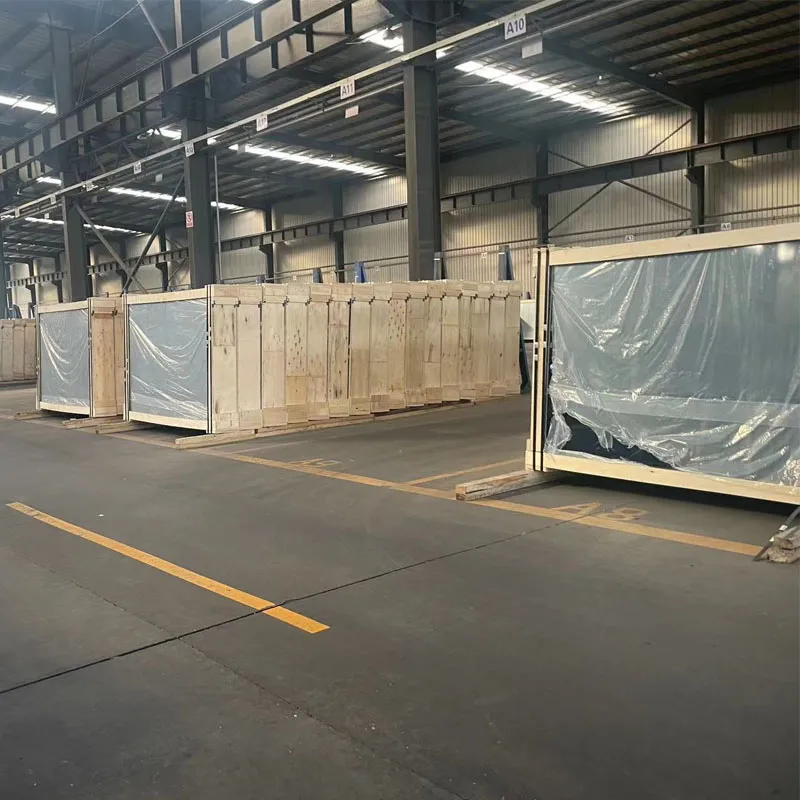Types of Float Glass An Overview
Float glass, a popular material in modern architecture and manufacturing, is characterized by its smooth surface and optical clarity. The production process involves floating molten glass on top of molten tin, which creates a homogeneous and flat sheet. This type of glass has revolutionized the construction and design industries, becoming a staple for windows, facades, mirrors, and many other applications. In this article, we will explore the various types of float glass and their unique characteristics.
1. Clear Float Glass
Clear float glass is the most basic type, providing unparalleled transparency and clarity. It is produced without any color additives, allowing maximum light transmission. This glass is often used in residential and commercial buildings for windows, doors, and interior partitions. Its high clarity makes it ideal for applications where visibility is paramount, such as display cases and picture frames.
2. Low Iron Float Glass
Low iron float glass is a premium version of clear float glass, with significantly reduced iron content. This reduction minimizes the greenish tint commonly found in standard float glass, resulting in superior transparency. Low iron glass is particularly favored in high-end architectural applications where aesthetics and light transmission are crucial. It is often used in storefronts, skylights, and glass railings, providing a seamless view and enhancing the overall look of spaces.
3. Tinted Float Glass
Tinted float glass is produced by adding color agents to the molten glass during the manufacturing process. This variety comes in several shades, such as gray, bronze, and blue, allowing for aesthetic customization and solar control. Tinted glass helps reduce glare and can assist in thermal regulation by absorbing and reflecting solar energy. It is commonly used in commercial buildings, where both appearance and energy efficiency are important considerations.
types of float glass
4. Reflective Float Glass
Reflective float glass features a thin metallic coating applied to one side of the glass, which reflects light while allowing some visibility from the other side. This type is often used in office buildings and skyscrapers, where glare reduction and heat control are essential. Reflective glass not only enhances energy efficiency by blocking sunlight but also adds a stylish finish to architectural designs. Importantly, it provides privacy during the day while still allowing natural light to enter.
5. Laminated Float Glass
Laminated float glass is created by sandwiching a layer of polyvinyl butyral (PVB) or similar interlayers between two sheets of float glass. This configuration provides enhanced safety, security, and sound insulation. In the event of breakage, the interlayer holds the glass pieces together, reducing the risk of injury from sharp shards. Laminated glass is commonly used in areas requiring additional safety measures, such as in schools, hospitals, and residential buildings.
6. Tempered Float Glass
Tempered float glass is subjected to a thermal process that increases its strength compared to standard float glass. This type can withstand greater impact and thermal stress, making it suitable for applications in high-traffic areas or environments with extreme temperature variations. When broken, tempered glass shatters into small, blunt pieces, reducing the risk of injury. It is frequently used in shower doors, glass railings, and building facades.
Conclusion
The variety of float glass types available today allows architects, builders, and designers to choose the best option for their specific needs. From clear to laminated and tempered variations, each type offers unique benefits that enhance both functionality and aesthetics. As technology and design continue to evolve, float glass remains a fundamental material in shaping the spaces we inhabit.
 Afrikaans
Afrikaans  Albanian
Albanian  Amharic
Amharic  Arabic
Arabic  Armenian
Armenian  Azerbaijani
Azerbaijani  Basque
Basque  Belarusian
Belarusian  Bengali
Bengali  Bosnian
Bosnian  Bulgarian
Bulgarian  Catalan
Catalan  Cebuano
Cebuano  Corsican
Corsican  Croatian
Croatian  Czech
Czech  Danish
Danish  Dutch
Dutch  English
English  Esperanto
Esperanto  Estonian
Estonian  Finnish
Finnish  French
French  Frisian
Frisian  Galician
Galician  Georgian
Georgian  German
German  Greek
Greek  Gujarati
Gujarati  Haitian Creole
Haitian Creole  hausa
hausa  hawaiian
hawaiian  Hebrew
Hebrew  Hindi
Hindi  Miao
Miao  Hungarian
Hungarian  Icelandic
Icelandic  igbo
igbo  Indonesian
Indonesian  irish
irish  Italian
Italian  Japanese
Japanese  Javanese
Javanese  Kannada
Kannada  kazakh
kazakh  Khmer
Khmer  Rwandese
Rwandese  Korean
Korean  Kurdish
Kurdish  Kyrgyz
Kyrgyz  Lao
Lao  Latin
Latin  Latvian
Latvian  Lithuanian
Lithuanian  Luxembourgish
Luxembourgish  Macedonian
Macedonian  Malgashi
Malgashi  Malay
Malay  Malayalam
Malayalam  Maltese
Maltese  Maori
Maori  Marathi
Marathi  Mongolian
Mongolian  Myanmar
Myanmar  Nepali
Nepali  Norwegian
Norwegian  Norwegian
Norwegian  Occitan
Occitan  Pashto
Pashto  Persian
Persian  Polish
Polish  Portuguese
Portuguese  Punjabi
Punjabi  Romanian
Romanian  Russian
Russian  Samoan
Samoan  Scottish Gaelic
Scottish Gaelic  Serbian
Serbian  Sesotho
Sesotho  Shona
Shona  Sindhi
Sindhi  Sinhala
Sinhala  Slovak
Slovak  Slovenian
Slovenian  Somali
Somali  Spanish
Spanish  Sundanese
Sundanese  Swahili
Swahili  Swedish
Swedish  Tagalog
Tagalog  Tajik
Tajik  Tamil
Tamil  Tatar
Tatar  Telugu
Telugu  Thai
Thai  Turkish
Turkish  Turkmen
Turkmen  Ukrainian
Ukrainian  Urdu
Urdu  Uighur
Uighur  Uzbek
Uzbek  Vietnamese
Vietnamese  Welsh
Welsh  Bantu
Bantu  Yiddish
Yiddish  Yoruba
Yoruba  Zulu
Zulu 

